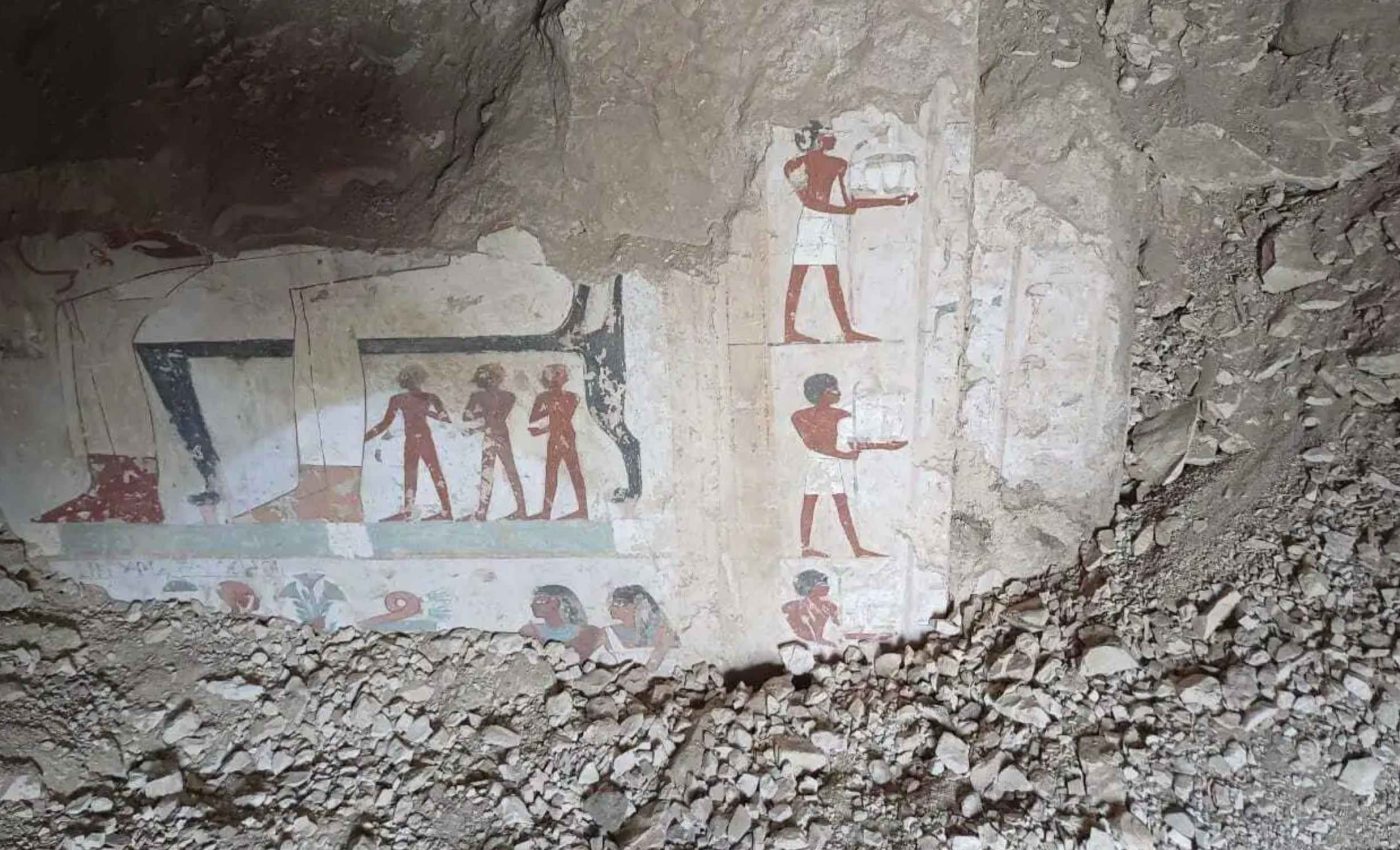
Archaeologists discover new Egyptian tombs dating back more than 3,000 years
Three tombs of prominent officials have come to light in Dra Abu el-Naga, a necropolis on Luxor’s West Bank in Egypt. Each one preserves the voice of its owner through surviving inscriptions.
The discovery reveals how power, religion, and everyday labor intertwined in ancient Egyptian society during a flourishing chapter of its history
Archaeologists identified the tomb owners by reading titles carved on walls and lintels. The names are Amun-em-Ipet from the Ramesside period, and two Eighteenth Dynasty officials; Baki and an individual recorded as “S.”
This fieldwork was overseen by Dr. Mohamed Ismail Khaled, Secretary-General of Egypt’s Supreme Council of Antiquities at the Ministry of Tourism and Antiquities (MoTA).
Occupants of the Egyptian tombs
Amun-em-Ipet served in the temple or estate of Amun during the Ramesside period. His tomb is damaged, yet fragments still show details of offerings, funerary furniture bearers, and a banquet that once anchored the ritual program.
Baki supervised a grain silo in the Eighteenth Dynasty, a practical role that hints at the logistics behind temple life and taxation.
The inscriptions in his chapel confirmed his name and post, which helps date the architecture and the painting style.
The third tomb belonged to an official named as “S.” He was a scribe who also supervised the Temple of Amun in the oases and acted as mayor of the northern oases. Those titles tie his career to state reach across desert routes and settlements far from the Nile.
Where the Egyptian tombs sit in history
The New Kingdom is considered to fall between about 1550 and 1070 B.C., an era of strong central government and expansive building. This frames these burials among officials who kept the machinery of temples and estates running.
A detailed Theban Mapping Project map shows Dra Abu el-Naga on the West Bank. It lies alongside other cemetery zones like el-Khokha and Sheikh Abd el-Qurna. The setting is part of the larger Theban funerary landscape tied to Karnak and Luxor Temples across the river.
The officials here were not kings, but their tombs often echo royal themes at a smaller scale. That is why names and job titles carved inside are so valuable for reconstructing careers and networks.
Why the titles matter
Titles in these inscriptions are not decoration. They tell who moved grain, recorded accounts, and supervised shrines, which are the bones of a working state.
A grain-silo supervisor like Baki sat at a choke point of storage and redistribution. A scribe and temple supervisor like “S” bridged estate management and regional authority in the oases. He also acted as a mayor who linked desert towns to the court.
These roles also explain why such men could afford painted chapels, multiple halls, and fine burial equipment. Office, income, and afterlife hopes were connected.
How the Egyptian tombs are arranged
Amun-em-Ipet’s tomb begins with a small courtyard and an entrance that leads into a square hall ending in a niche. Later reuse broke through the western wall to create an added hall.
Baki’s tomb unfolds through a long corridor-like courtyard and a second court before the main doorway. Inside, a transverse hall feeds a longitudinal hall that reaches an unfinished chamber with a burial well.
The tomb of “S” starts with a small courtyard containing a well, then the main entrance. A transverse hall leads into an incomplete longitudinal hall that shows work halted before full decoration.
Artifacts and symbols
Even with losses, scenes of offerings, processions, and banquets survive in Amun-em-Ipet’s chapel. These images support rituals that ancient families performed during festivals and private visits.
Small funerary figures called shabti were made to answer work assignments in the afterlife. A British Museum entry explains how the figurines carry hoes and a grain sack, and quote Book of the Dead texts that compel them to labor in place of the deceased.
The Ministry of Tourism and Antiquities (MoTA) emphasized that the discovery, carried out entirely by Egyptian archaeologists, highlights the growing expertise and skill of national excavation teams.
Officials noted that the find demonstrates Egypt’s ability to achieve discoveries of global importance that continue to capture international attention.
Work is now focused on cleaning and documenting the inscriptions in detail. This will lead to a full scientific publication, once analysis is complete.
More than 100,000 artifacts are slated for display at the Grand Egyptian Museum, which gives broader context for how such finds enter public view.
The museum’s galleries will help visitors see officials like Amun-em-Ipet, Baki, and “S” within the full sweep of Egyptian history.
Searching Egypt for more tombs
The mission will finish clearing debris and stabilizing surfaces so inscriptions can be read, line by line. That slow work lets titles be checked, paint layers mapped, and damaged areas recorded for conservation.
Researchers are comparing the newly uncovered material with earlier excavations from the same necropolis to trace patterns of reuse, damage, and restoration.
Evidence suggests that many tombs in this area were reopened and altered centuries after their original construction, which may account for missing decorations and collapsed walls.
Once the ongoing study is finished, the archaeological team plans to release a comprehensive report detailing the tombs’ architecture, inscriptions, and burial goods.
This documentation will establish the identities and roles of the officials within Egypt’s historical record and ensure the findings are preserved for future scholarship.
Information from a statement by the Egyptian Ministry of Tourism and Antiquities.
—–
Like what you read? Subscribe to our newsletter for engaging articles, exclusive content, and the latest updates.
Check us out on EarthSnap, a free app brought to you by Eric Ralls and Earth.com.
—–













